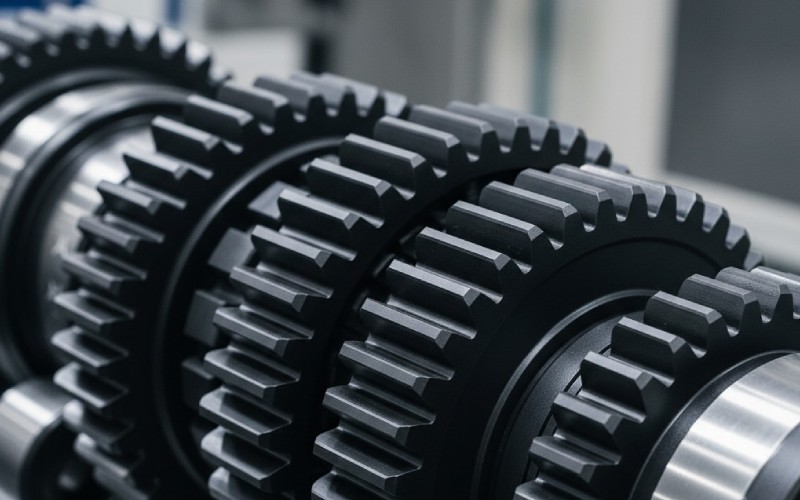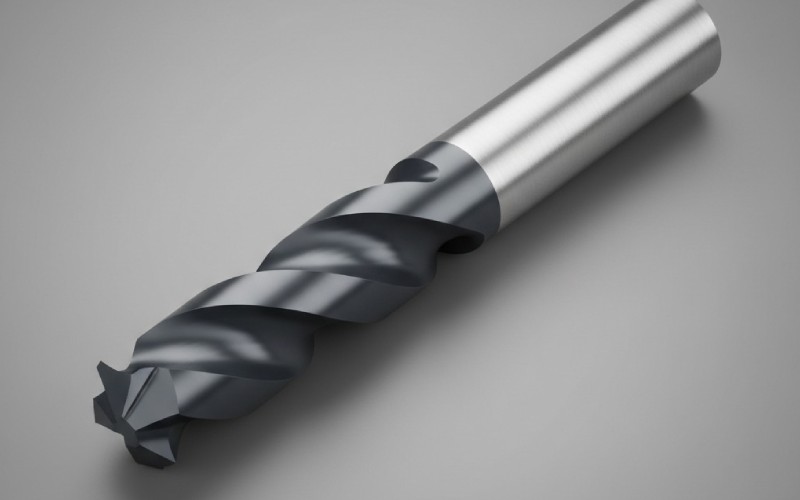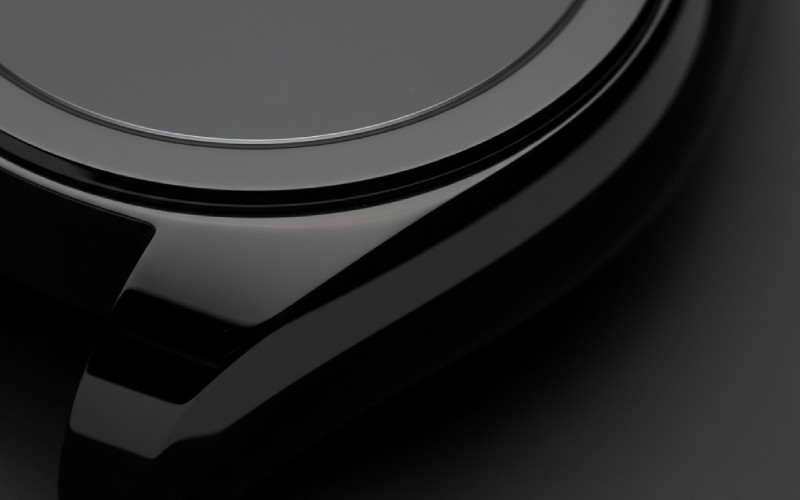Let Istar help you get started on your project with our experience and know-how!
Upload your design files and production requirements and we will get back to you within 30 minutes!

DLC is short for diamond-like carbon. This special coat is changing how we make stuff. It makes parts a lot stronger. It helps them last for a very long time. In this article, I am going to share what I know about this great material. I will explain it using simple words. You will find out what a DLC coating is, how it works, and the places you can use it. This will help you see why this carbon coat is a really big deal.
Let’s begin with the simple facts. A diamond-like carbon coat is a very thin layer of stuff. You can picture it like a coat of paint, but this one is incredibly strong. It is mostly made from carbon atoms. These are the same atoms you find in a real diamond. They are also in the graphite of a pencil. The name “diamond-like carbon” fits it perfectly. This coat has some of the best qualities of a diamond. For example, it is very hard. At the same time, it is also slippery like graphite.
This special coat is not a crystal like a diamond is. Instead, its structure is all jumbled up. People who study science call this an amorphous structure. Think about a pile of bricks. A diamond has its carbon atoms lined up in a very neat and perfect way, like a strong brick wall. An amorphous carbon layer is more like a pile of bricks that were just dumped in a heap. This jumbled structure is what gives the dlc coating its special abilities. This amorphous quality makes the coat hard, but also a little bit flexible.
This thin film coating is a kind of hard carbon thin film. It is put onto another material, like a piece of metal or plastic, to make it better. The dlc coating protects the part. It keeps it from getting worn out. This thin coat can make a cheap part work like a very pricey one. It is a special trick in the world of engineering. The coat can be made very thin, maybe just a micrometer thick. But it makes the part work a lot better.

You may ask how this carbon coat can be so special. The secret is found in the chemical bond that holds the carbon atoms together. Inside a dlc coating, there are two kinds of bonds. Some carbon atoms are joined together exactly like they are in a diamond. This diamond bond is what gives the coat its extreme hardness. Other carbon atoms are joined in a way that is like graphite. This bond is what makes the coat so slippery and cuts down on rubbing, or friction.
The combination of these two bonds is exactly what we want. The properties of dlc come from this mix. We can manage the process to create more diamond-like bonds if we need more hardness. Or, we can create more graphite-like bonds to have less friction. This allows us to make a special coat for a certain job. The hardness is a very important feature. It gives great resistance, so it does not get scratched or worn easily. I have seen parts coated with dlc that still look brand new after years of tough work.
The low friction is also a very big deal. When parts rub against each other, friction makes heat and causes wear. This makes parts wear out. A dlc coat is very slippery. It has a low coefficient of friction. This means that parts can slide by one another with no problem. This lowers the need for oil or other lubrication. Less friction also means that less energy is lost. This helps machines run better. They don’t waste as much energy.
Putting a dlc coating onto a part is a very special process. You can’t just use a brush to paint it on. The most popular method is called plasma-assisted chemical vapor deposition. That name might sound hard to understand, so I will explain it. The parts that need a coat are put into a special box with no air inside, called a vacuum chamber. All of the air is pumped out. Then, a special gas that has carbon in it is let into the box.
After that, we make a plasma inside the box. A plasma is like a kind of super-hot, energy-filled gas. This energy breaks the gas apart. It sets the carbon atoms free. These carbon atoms then move around very fast and stick to the parts. They build up, one atom after another, and form a thin, strong layer. This deposition process needs to be managed with great care. The temperature and the pressure in the box are very important for the quality of the coat.
The whole dlc coating process is very exact. We can control how thick the coat is, down to the tiniest measurement. The final layer needs to have good adhesion. This just means the dlc film must stick really, really well to the part it is on. That part is called the substrate material. A strong bond is the key to how long the coat lasts. If the bond is not strong, the coat could peel right off. A strong chemical bond makes sure the dlc coating will not come off, so it can do its job. The quality of this process decides how good the final coat will be.
When I look at a dlc coating, I want to know about its features. What is it able to do? The properties of dlc are really quite great. It is not just one thing, but a mix of wonderful qualities that make this coat so helpful. Its most well-known feature is its hardness. A dlc coat can be many times harder than almost any kind of steel. This hardness makes it great at resisting wear.
Here are a few of the most important features:
The electrical properties of dlc are also worth noting. Most dlc coatings are not good at letting electricity pass through them. This makes them good for stopping electricity. We can change the dlc process to make a coat that does let electricity pass through if a job needs it. This ability to be changed is a big plus. Its mechanical features include being very tough and having a smooth surface. It is this mix of hardness, low friction, and resistance to chemicals that makes the dlc coating so useful.
Not every dlc coating is exactly the same. I like to think of them as being like a family of materials. They all have the name “diamond-like carbon,” but each one is a bit different. We can mix in other elements with the carbon coat to give it different qualities. For instance, if we add silicon, it can make the coat work better when it gets very hot. If we add a metal like tungsten, it can make it even tougher.
One of the strongest kinds of dlc coating has the name ta-C. The “ta” is short for tetrahedral amorphous carbon. This is a very special kind of amorphous carbon. A ta-C coat has a very large amount of diamond-like bonds. This is what makes the ta-C coat the hardest and strongest kind of dlc coating. It is also a hydrogen-free coat, which makes it work even better. The structure of a ta-C film is packed very tightly. I often suggest using a ta-C coat for the hardest jobs. The extreme hardness of ta-C is almost as hard as a real diamond.
The chart below gives you a simple look at a few kinds.
| Kind of DLC Coat | Main Feature | Best Used For |
|---|---|---|
| Amorphous Carbon (a-C:H) | A good coat for many uses | General use, low friction |
| ta-C (Tetrahedral) | The very hardest, very pure | Extreme wear, tools for cutting |
| Metal-Containing (Me-DLC) | Very tough | Heavy jobs, engine parts |
| Silicon-Containing (Si-DLC) | Works in high heat | Hot places |
Picking the right diamond-like carbon coating is all about the job it needs to do. Do you need the most hardness you can get? Then ta-C is the one for you. Do you need it to be tougher? A dlc coat with metal mixed in might be a better choice. Knowing the different kinds of dlc is a big step toward using it well.
So, where do people use this great coat? The applications of dlc are found almost everywhere. I have seen it used in a great number of industries. In any spot where you have parts rubbing on each other, or where you need to keep a surface safe, a dlc coating can be a big help. Its special group of features makes it a great way for engineers to fix problems.
For instance, in the world of making things, we use it on tools that cut and on drill bits. A dlc-coated drill bit is able to cut faster. It can also last much longer than a normal one. It is also helpful on a mold that is used to make plastic parts. The plastic will not stick to the slippery dlc coat, which means the parts come out with no trouble. This makes the whole production process go faster. Any component that has a problem with wear or friction is a good choice for a dlc coating. The main reason is to make the lifespan and the operation of a part much better.
Other large areas of use are in planes and for defense. Parts on airplanes and satellites must be light but also strong. A dlc coating can protect a part made of a light metal from wear. For expensive things, you can find a diamond like carbon coat on fancy watches. It gives the watch a nice black look and makes it very hard to scratch. The use of this coat is getting bigger all the time as more and more people find out about it.
The car business is one of the top users of dlc coatings. I saw this start many years ago in car racing, like in Formula 1. In a race car, every single bit of power is important. A dlc coat is used on engine parts to cut down on rubbing. When there is less friction, more power can get to the wheels. It also helps the engine run at a cooler temperature. The parts last longer even with all that stress.
Today, this same technology is found in the cars we drive every day. Many parts inside an engine, like the valve lifters and pistons, are coated with dlc. This dlc coating helps to improve gas mileage. It also makes the engine more dependable, so you can count on it. The car world needs parts that can keep working for many thousands of miles. The great wear resistance of a dlc coat is a big help. It protects very important parts and keeps them from failing.
The dlc coating is also put on gears and bearings. These parts are always under a lot of pressure. The hardness and slickness of the coat help them work smoothly for a very long time. The dlc-coated component can take the pressure of a new car engine. As cars get more and more advanced, the need for special materials like a diamond-like carbon coating will get even bigger. It is a key reason why modern cars are so good.

Yes, it can, and this is one of the most exciting ways to use dlc. When you put an object inside a person’s body, it needs to be completely safe. The material cannot be poisonous. It cannot cause a bad reaction from the body. This is why the biocompatibility of a dlc coating is so important. A dlc coat is very safe for people. Our bodies do not have a bad reaction to this special carbon coat.
Because of this, a dlc coating is used on medical implants. Think about a new hip or knee joint made by doctors. These parts will rub together millions of times. A dlc coat makes them very slippery and very good at resisting wear. This means the implant can work for a very long time. The low wear rate means that fewer tiny particle pieces will break away and get into the body. This is a very good thing for the person’s health.
It is also used on the tools that doctors use for operations. A dlc coat makes the tools harder. It also gives them a sharp edge that stays sharp for longer. The surface is also very smooth. This makes the tools easier to keep clean. The great chemical resistance of the coat means it can handle the tough cleaning methods used in hospitals. The use dlc is helping to make medical technology both safer and better at what it does.
When I receive a part that has been coated with dlc, I need to check if the coat is any good. We can’t tell just by looking at it. We have to take some measurements to check its quality. There are special tools and tests that can tell us all we need to know about the dlc film. How good the coat is makes a big difference in how well it works. A bad coat is even worse than having no coat at all.
First, we measure how thick the layer is. The thickness needs to be perfect for the job it will do. If it is too thin, it will wear out fast. If it is too thick, it might crack or even peel off. We use special instruments to get an exact measurement of the coat’s thickness. We also test how hard the layer is. We use a tiny diamond point and press it into the coat. By looking at the size of the mark it makes, we can find out how hard it is.
We also have to test the bond. This is a measurement of how well the coat sticks to the metal part it is on. An adhesive tape test is an easy way to check the bond. For a more serious test, we use a tool called a scratch tester. This tool pulls a diamond point over the surface. It presses down with more and more force. We watch to see at what point the dlc coating starts to break. This shows us how strong the bond is. These tests make sure that the dlc coating is high quality.
After reading all of this, you may be wondering if a dlc coating is the right thing for your project. I always tell people that it depends on the problem you want to fix. A dlc coat is a very strong tool, but it is not the answer for everything. You should think about using a dlc coating if you are having issues with wear, friction, or rust.
If you have a component that is wearing out faster than it should, a diamond-like carbon coat can make it last a lot longer. If you need to cut down on friction in a machine to save power or make it work better, this coat is an excellent choice. It can provide lubrication, which means it makes things slippery even in spots where you cannot use oil. If you have a metal part that needs to be protected from a harsh place, the resistance of the coat will be a great help.
But, you should know that the dlc process can cost more than a simple paint job or other kinds of coatings. You must decide if the good things it does are worth the money. For a part that needs to work really well or for a very important job, the answer is usually yes. The longer life and better work can save you a large amount of money over time. The best thing to do is to talk to someone who knows a lot about it. That person can look at what you need and help you pick the right kind of diamond-like carbon coating.